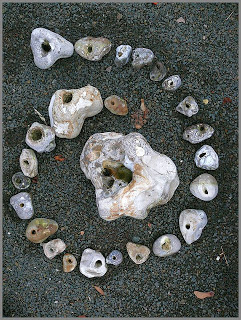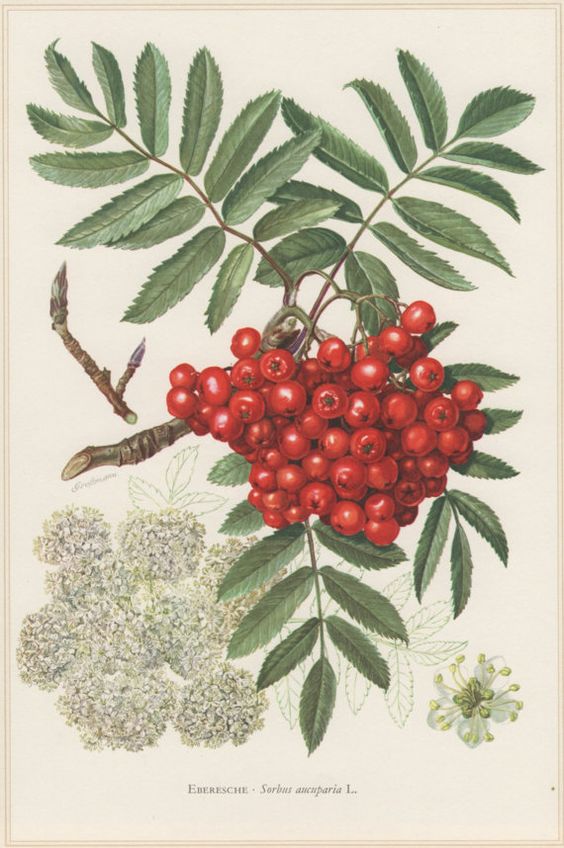We’ve already learned all the ways to either speak with the dead or accidentally give away the fact that you speak with the dead, but what if, instead of being a witch, you were just one of the villagers who wanted to live a calm, peaceful, witchcraft-free life? Maybe you’re more of an introvert according to the Myers-Briggs personality indicator, and you’d rather just avoid all the drama altogether?

As it turns out, there are numerous ways to protect yourself and your home from spells, curses, and the witches themselves, despite all of them being based in a little magic of their own. Nonetheless, if you’ve found yourself plagued by high-pitched cackling and black cats in your window, perhaps consider implementing a few of these DIYs around the house.
-
Witch Markings
Typically found around a home’s entry points like windows and doorways, witch markings consist of “flower-like designs made with compasses and dividers, pentangles, intertwined Vs and Ms for the Virgin Mary, and tangles of lines which it was believed confused spirits who attempted to follow them. Tadpole-shaped scorch marks made with a candle flame have also been found.”

How many accidental witch circles have been carved into school desks and wooden lockers throughout the years? If they can also be used to fight against negative energies, does that work on all negative energies, or just spiritual ones? Would carving a sigil into my locker have helped me get better grades?
I digress. While some markings found on interior beams might just be those of a carpenter’s notes, there’s a chance they might also be bygone sigils of protections against witches and their curses. If you’re still concerned about witches entering your home in 2017, maybe consider a wooden front door over one of the new fancy steel or fiberglass ones, seeing as it would be more of a hassle than anything to carve into one of those.
Feel free to mute this video. I did.
-
Concealed Shoes
As it turns out, hiding shoes in the foundational walls, chimneys, floors, and ceilings, in an attempt to repel not only witches, but also demons and all negativity in general, was pretty common practice back in the day — when the shoe wasn’t otherwise using all of its charm to incite fertility in the women living in the house.
On top of shoes, it was common to include a number of different charmed items in the walls of a new home in an attempt to drive away bad spirits and energies. On top of shoes, these charms could range anywhere from written charms, dried cats, horse skulls, and witch bottles.
Old lore explains the reason why shoes were chosen: it used to be thought that a witch was attracted to the scent of human shoes, and in finding one, would be compelled to nestle inside and live there, only to never be able to escape. This idea seems to be based on a 14th-century saint, John Schorne, who was said to have trapped the devil in a boot. It kind of changes the story of the Old Woman Who Lived in a Shoe, don’t you think?

-
Witch’s Ledge
Also known as Witch’s Stones and Witch’s Seats, a Witch’s Ledge is a small flat stone that juts out from the body of a chimney. The story goes, as a witch tires during Friday night flights on her way home from the local dancing-naked-in-the-woods, she might stop at one of the ledges to take a breather. However, if there’s no ledge available for her to sit, she might become angry and feel personally slighted, leading her to leap down the chimney and wreak havoc inside the house.

Image from Winsham.Blogspot.com
The extra stones didn’t originate as witch’s seats, however, and originally were designed to keep thatched roofs from being damaged as rainwater fell down the sides of the chimney. In my opinion, having a nice little rest stop for the friendly neighborhood witch is more fun of a thought. Did homeowners ever include a bowl of warm milk for the witch’s black cat familiar as well?
One more comment, before we move on: how big did these homeowners really think witches were? Because from what I can see, they had to only be a few inches in order to actually fit on one of the ledges! Perhaps they used their brooms to support their feet?
-
Hag Stones
Hag stones (also called adder stones, witch stones, serpent’s eggs, and snake’s eggs), are stones with naturally-occurring holes in their bodies, and are thought to be powerful talismans for fighting against demons, ghosts, and of course, witches. They’re also thought to be able to give the viewer sight into the fey world by peering through the hole like a telescope.

Image from CauldronCraftOddities.Blogspot.Com
These stones are also be used as succubi and “evil hag” repellent, as well as a protection against eye diseases, nightmares, evil charms, and even whooping cough. Hag stones can be found just about anywhere, though seem to occur most commonly in North Germany around the Baltic Seas.
According to the adder stone Wikipedia page, there are three recorded “origins” of the stones’ unique shape:
Three traditions exist as to the origins of adder stones.
One holds that the stones are the hardened saliva of large numbers of serpents massing together, the perforations being caused by their tongues.
The second claims that an adder stone comes from the head of a serpent or is made by the sting of an adder.
The third is more modern (and much easier to attain). It details that the stone can be any rock with a hole bored through the middle by water. Human intervention (i.e., direction of water or placement of the stone) is not allowed.
So much for making my own hag stone with a rock from the backyard and an electric drill — I was hoping to finally repair my eyesight.
-
Rowan Trees
Rowan Trees have a long history when it comes to lore, their origins stemming from Greek mythology. Supposedly, when Hebe, the goddess of youth, had her chalice stolen by demons, the gods sent an eagle to retrieve it. In the subsequent battle, the feathers and the blood from the eagle fell to earth, and from such grew the rowan trees. Hence the featherlike shape of the leaves, and the red berries that represent of drops of blood.

The color of the berries continues into beliefs about protection from witches, as the color red was thought to be the most powerful against negativity and dark magic. The stems of the berries also form five points, which is related to the sign of the pentagram, another symbol designated for protection. Apparently, for some time, it was even considered sacrilege in some areas to use the rowan tree for anything other than protection rituals.
Not only was the place of the tree’s roots protected, but people might also snip off small twigs in order to carry with them for personal protection, as well as protection of their livestock and crops. On the Isle of Man located in the Irish Sea, for example, people would use sticks from the rowan trees and form them into the shape of a cross using red thread, to be worn themselves or placed around the necks of their cows.
Personally, that mental image makes me think of only one thing…

Want to read more? Check out these sites!
10 Odd Ways People Protected Themselves From Witchcraft
Protection Against Witches
18 Ways to Protect Your Home From Evil Spirits
Kelsey graduated from Boise State University with a BA in Visual Arts, and is currently working as a freelance writer, while doodling anime on the side with one hand and petting cats with the other.

Kelsey, your posts are Ah-MAZING! Just when I think you can’t possibly top yourself, what do you do? Find even more clever stuff to write about and more clever ways to present it. Thank you for sharing this and for teaching me new things in more ways than one!